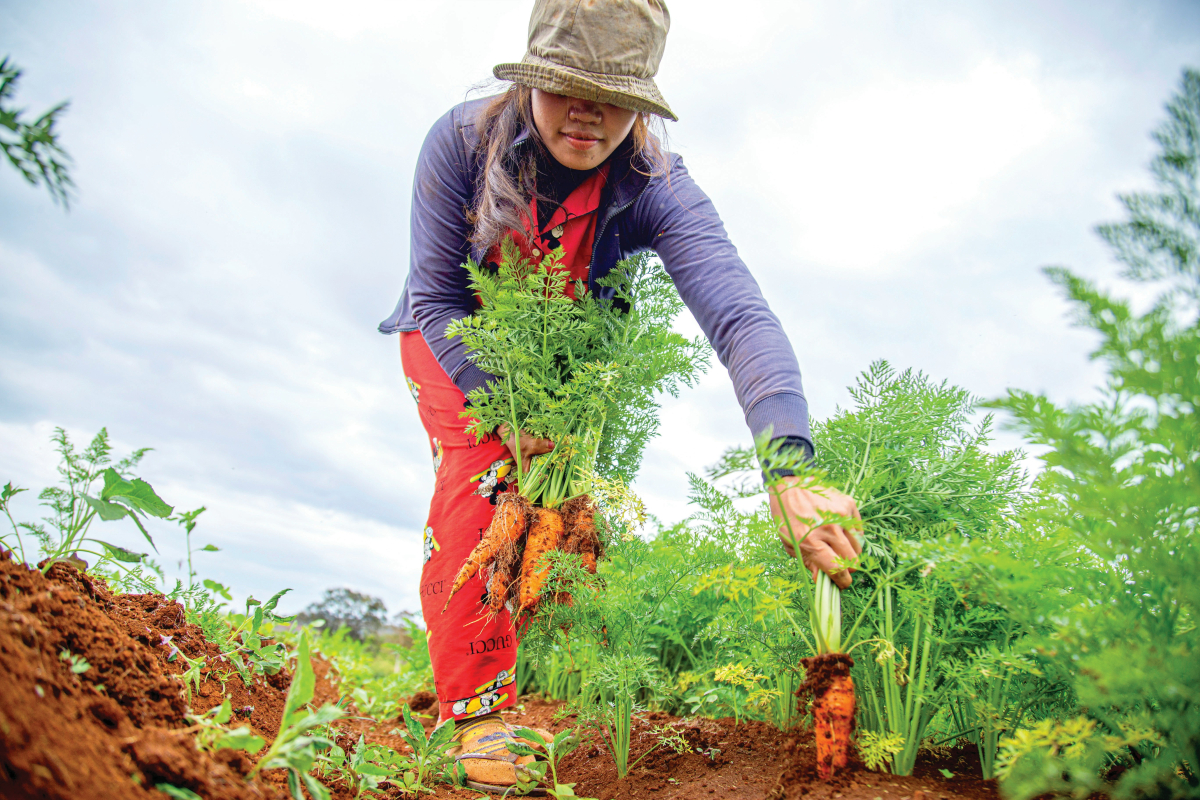Support strong Canadian climate journalism for 2025
During an August heatwave in British Columbia last year, Ryan was in a mobile kitchen hovering over excruciatingly hot open flames, a deep fryer and a steel grill plate. He remembers the thermometer inside his work area hitting 50 C.
Temperatures across the province ranged between 26 C and 42 C, but the heat was amplified inside his workspace, which was basically a metal box. Ryan and his coworkers, who cook for the film industry, asked production to stop for the day, but they refused.
“[We] ended up having eight people going down for heat stroke,” he said.
“I’ll be honest, they don’t give a fuck about you. And [we] found that out the hard way when they pushed on during the heatwave and a few crew fell ill.”
Canada’s National Observer agreed to use only Ryan’s first name for this story to protect his anonymity in the workplace.
Labour groups, advocates and researchers are calling for a maximum temperature policy that would force workplaces to put worker protections in place when it gets hot, and halt work in extreme heat conditions.
In B.C., the Worker Solidarity Network, a group made up of precarious and non-unionized workers in the province, is pushing for the provincial government to develop “too hot to work” legislation. The group detailed the call in a 2023 report describing the impact of extreme weather (including heat) on food service workers.
The call is modelled off existing rules in Oregon, where heat protections for workers are the strongest in the U.S. When the heat index (which combines temperature and humidity) is above 27 C, employers have to provide cooling measures such as access to cool drinking water and shade. When it hits 32 C, heat prevention rest breaks are put in place and employers are required to monitor workers for heat illness.
Meanwhile, Spain banned some outdoor work during extreme heat following the death of a municipal worker during a 2022 heatwave in Madrid. The country also has minimum and maximum temperatures as law: between 17 C and 27 C is required for work in an office, while work requiring physical effort requires a temperature between 14 C to 25 C.
In Canada, heat protection rules for workers are “patchwork,” explained Anelyse Weiler, an assistant professor at the University of Victoria’s department of sociology who is also on the board of the Worker Solidarity Network. In B.C. where regulations have not been updated since 2005, the rules note only that internal body temperature shouldn’t go past 38 C. There is no reference to ambient temperature.
It’s unlikely that employers are “running around measuring people's core body temperature,” said Weiler, who says that instead, heat rules should be straightforward and simpler to enforce.
The province’s Ministry of Labour told Canada’s National Observer that B.C.’s Occupational Health and Safety Regulation notes employers have a duty to protect workers from extreme heat and pointed to the right to refuse unsafe work.
There are similar rules in Ontario, which has no maximum temperature limit. The province puts the onus on employers to “take every precaution reasonable in the circumstances for the protection of a worker” — a catch-all that isn’t specific to heat. Meanwhile, the province does have rules to protect workers from the cold, and mandates that indoor work temperature must be at least 18 C.
While Canada may not experience extreme heat year-round, the spikes seen during extreme heat events lay bare how underprepared workplaces are, explained Weiler. During the 2021 heat dome in the Pacific Northwest, over 600 people died due to extreme heat impacts and demand for healthcare spiked. There was a 100 per cent increase in deaths among people aged 50 or older during the event and many of the people who died during the heat dome had underlying chronic health conditions such as heart disease, diabetes, and depression.
However, WorkSafeBC notes that a third of their heat stress calls during the event were from restaurant workers. Briarpatch reports that WorkSafe saw an average of 41 heat stress claims accepted per year between 2018 and 2020, while 115 came in during the heat dome.
“Workers in Canada, in some ways. are more vulnerable to those unexpected extreme weather events than places like California, which have had a longer period of time to deal with the realities of extreme heat,” said Weiler.
“...the occupational health and safety risks of extreme heat are really high for workers who wouldn't normally have to worry about extreme heat and then get exposed to a massive, unexpected heatwave.”
Without stronger heat protections, workers will continue to suffer. The World Health Organization notes that extreme heat “compromises the body’s ability to regulate temperature and can result in a cascade of illnesses, including heat cramps, heat exhaustion, heatstroke, and hyperthermia.”
Older workers and those with chronic health issues are especially vulnerable to the impacts of heat, explains Weiler, along with precarious workers who often lack unions to pressure employers to put protective measures in place.
Agricultural Workers and Heat
Another key group of workers impacted by heat are farmworkers, explains Weiler. In an article she co-authored for The Conversation, she notes that workers in the hospitality and farm industries “face daunting barriers to unionization, experience hazards like sexual harassment and fear employer retaliation and job loss.” While there is no data for Canada, research in the United States has found that agricultural workers are 35 times more likely to die from heat-related stress than workers in other sectors.
About a quarter of agricultural workers in Canada are migrant farmworkers, who are deeply affected by all extreme weather events, explains Byron Cruz, a community organizer with Vancouver-based organization Sanctuary Health and advocate for migrant rights.
The workers, who come from countries such as Guatemala, Mexico and Honduras, face extreme difficulties working and sleeping in extreme heat, explained Cruz. Those experiences pile up on top of other inequalities such as poor housing conditions, racism and wage theft, as detailed by a report released by Migrant Workers Alliance for Change on the experience of migrant workers during the COVID-19 pandemic.
Many migrant workers work in greenhouses, where temperatures are often 5 to 10 C hotter than those outside, said Cruz. They are also sleeping in hot conditions, often with no air conditioning.
“A couple of years ago, we did a tour to the Okanagan…we only found two farms where workers had air conditioning at home,” he said. “The [maximum] temperature should apply to homes too, not just for workplaces.”
Other key considerations for better heat protection for farm workers would include implementing wage protections and, for example, paying for additional cooling breaks, said Cruz.
A March 2023 report by the Canadian Environmental Law Association, which documents the experience of agricultural workers in heat, found that “migrant workers reported abusive practices by employers which exacerbate the risks of extreme heat,” including instances of workers not being allowed to bring water to work, having limited access to shade and not enough breaks.
Meanwhile, in Ontario, which has the largest number of agricultural workers in Canada, farm workers don’t have the right to join a union based on a longstanding exclusion, explained Derek Johnstone of the United Food and Commercial Workers union. Even still, a slew of workers in that sector are vulnerable to heat (such as workers in the meatpacking industry), and “having the ability to join a union makes all the difference in terms of fatality rates in the workplace.”
Heat Protections in Oregon
In Oregon, heat protections came into place after the same heat dome that affected B.C., killing hundreds of people, including farmworker Sebastian Francisco Perez. Jamie Pang, the environmental health program director at the Oregon Environmental Council, explained that the state now has the strongest rules in the country.
The United States has a clearer picture of deaths at work due to extreme heat. There were 36 work-related deaths due to environmental heat exposure in 2021 and 436 in total since 2011. However, since Oregon put its rules into place, Pang said there have been no reports of a worker dying on the job due to heat, and the state is keeping up with inspection and enforcement of the policy.
Pang notes her group is largely satisfied with the protections made permanent in Oregon in 2022, noting a sharp contrast with Florida, which banned heat protections for workers last month.
“If we're going to fight climate change, we obviously need to address the [impact of] climate change on the most vulnerable populations. And that is service workers and outdoor workers and immigrant workers: they're going to be the first to be impacted,” she said.
Unions and Heat
The impact of heat on workers is something unions are increasingly aware of, explained Troy Winters, senior health and safety specialist at CUPE, Canada’s largest union. While CUPE doesn’t represent restaurant or farmworkers, Winters says many members are vulnerable to the heat: road workers, airline workers, and more.
Because CUPE is a public sector union, Winters is currently waiting for updated federal occupational health and safety regulations. He has been in talks with airline workers, who he has seen refuse work in planes on hot tarmac, and hopes the updated regulations will put more protections in place.
Airline workers have two sets of regulations, says Winters. One set covers when they’re in the air, and one covers when they’re on the ground. When they’re flying, there are temperature regulations, “but when they're on the ground, the [regulations] currently don't have any kind of specific temperature requirements, they just say that you have to protect people from heat.”
That needs to change, explains Winters, who said the new federal regulations should include “specific temperatures in which the employers are required to develop a plan or a program to manage the heat,” which he said will likely look different depending on the sector.
Meanwhile, as another hot summer looms, Weiler says provinces need to step up to the plate soon.
“There's a real gap in dealing with the realities of a warming climate and the harmful impacts that can have on workers.”





Comments
Our Canadian governments at all levels better implement worker protection immediately. We can't afford to start killing in the fields or metal boxes
Well-written article.
Am I the only Canadian who is of half a mind to think that our society is content to believe in our national myths even while being regularly peppered with evidence to the contrary?
Most Canadians live in a bubble and have no idea what it is like to work outside in extreme heat or being baked in a tin can or confined area. They even have no idea what it is like to work the fields in ideal weather conditions, let alone extreme heat. That is evident by people on public transit complaining about a little heat as they exit their air conditioned home to their air conditioned office. However, not everyone ends up in a work place that is air conditioned during the summer months.
The national myths continue ...